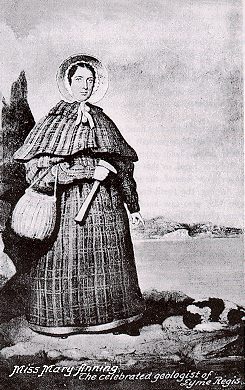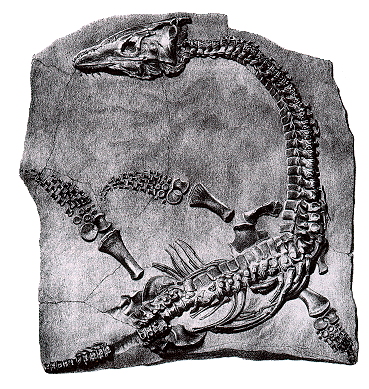 As part of the celebration of women in science and technology through the Ada Lovelace Day (#ALD10), I present Mary Anning (1799-1847) an autodidact paleontologist from Lyme Regis, England. She is noteworthy as a fossil hunter, who identified and dug out fossilized animals from the Jurassic period from Dover limestone cliffs for a living.
As part of the celebration of women in science and technology through the Ada Lovelace Day (#ALD10), I present Mary Anning (1799-1847) an autodidact paleontologist from Lyme Regis, England. She is noteworthy as a fossil hunter, who identified and dug out fossilized animals from the Jurassic period from Dover limestone cliffs for a living.Fossil hunting requires both keen pattern recognition abilities, to differentiate bones turned into stone from ordinary rocks, and high hand-eye coordination, required while extracting the fossils from the sediments without damaging them. Anning family made a modest living by finding fossils and selling them to collectors as geology and nascent discipline of evolution started converging at the beginning of the XIX century.
Some of the most interesting finds related to the Annings included marine dinosaurs: Ichthyosaurs and Plesiosaurs. Sadly...
...the majority of Mary's finds ended up in museums and personal collections without credit being given to her as the discoverer of the fossils. As time passed, Mary Anning and her family were forgotten by the scientific community and most historians, due to the lack of appropriate documentation of her special skills. Contributing to the oversight of Mary Anning and her contribution to paleontology was her social status and her gender. Many scientists of the day could not believe that a young woman from such a deprived background could posses the knowledge and skills that she seemed to display.
Sounds true. For instance, even though her story and finds are quite interesting the otherwise excellent Dinosaurs (Pockets) (1995) managed to omit Ms Anning entirely, even though it dedicated several pages to fossil hunters.
(1995) managed to omit Ms Anning entirely, even though it dedicated several pages to fossil hunters.
Plesiosaur: can you dig it?

I first found out about Ms Anning from Bil Bryson's excellent tome on the history of science A Short History of Nearly Everything
1 comment:
Nicce blog you have
Post a Comment